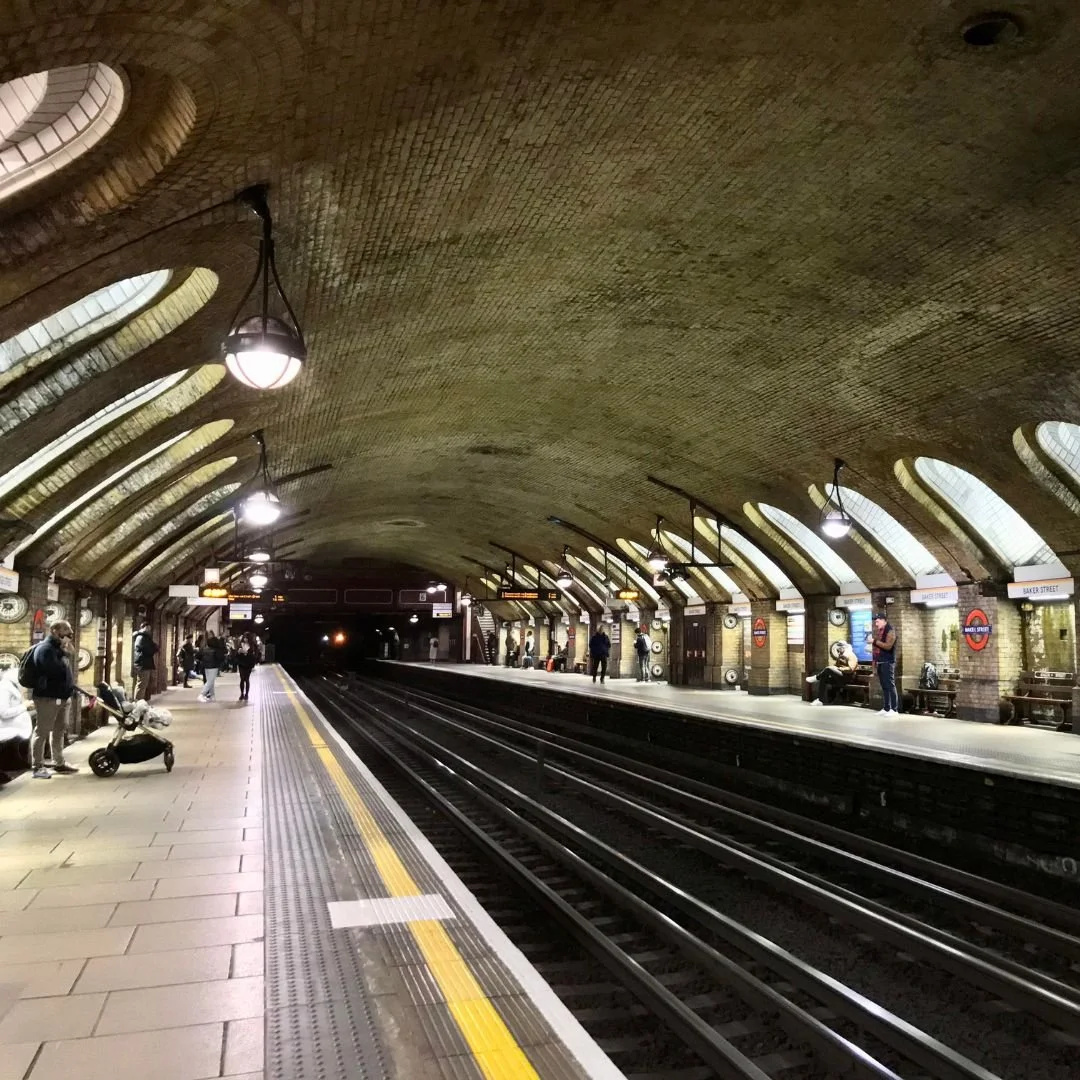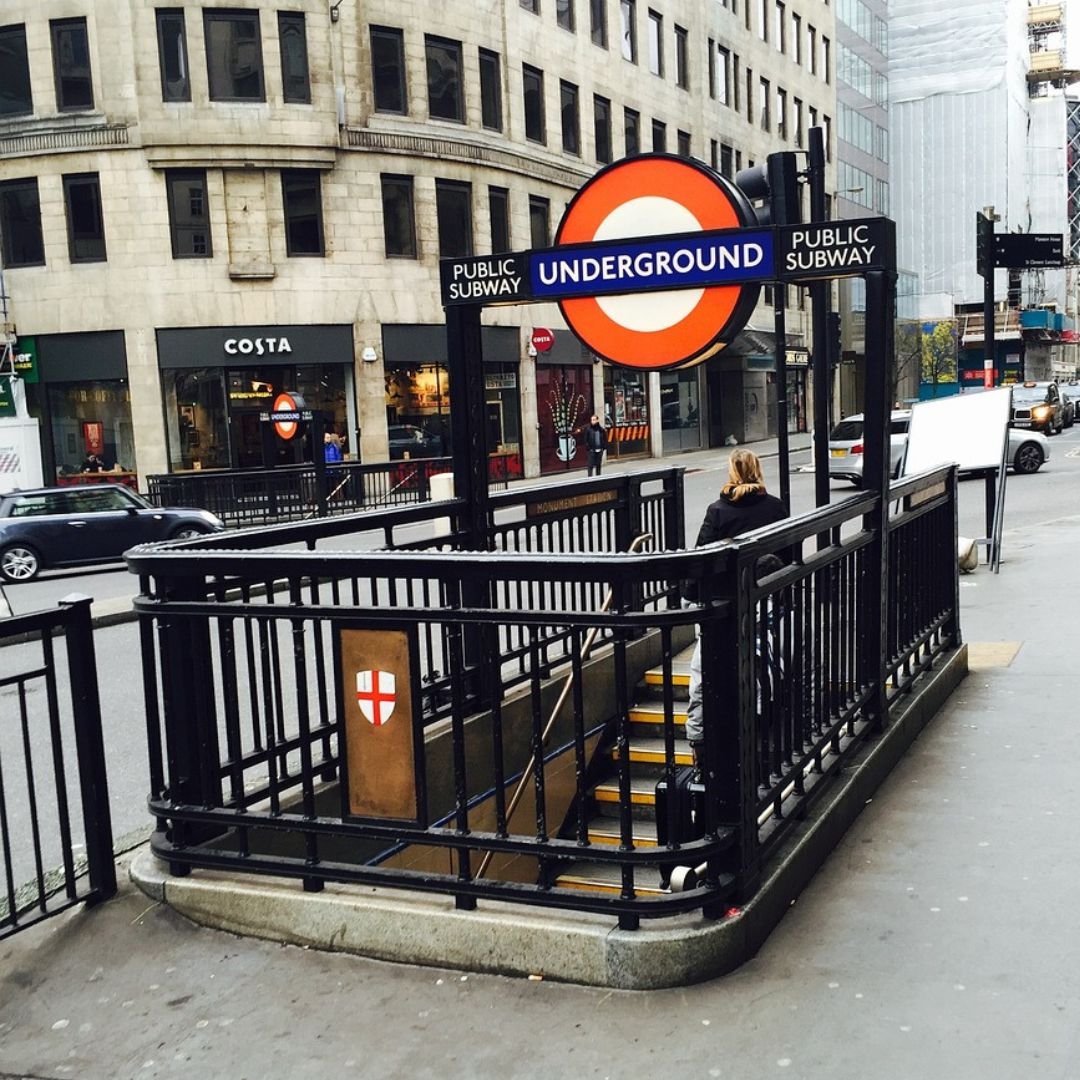Baker Street, London: World's Oldest Underground Station
Baker Street in London is the world's oldest underground station.
Opened on 10 January 1863 as part of the Metropolitan Railway, Baker Street was home to the launch of a revolutionary idea – carrying passengers beneath Victorian London’s congested streets.
In the first half of the 19th century, the population and physical extent of London grew greatly.
The congested streets and the distance to the city from the stations to the north and west prompted many attempts to get parliamentary approval to build new railway lines into the city.
To counter this, construction started on the world’s first underground station in March 1860, using the ‘cut-and-cover’ method to dig the tunnel.
Despite several accidents during construction, work was complete by the end of 1862 at a cost of £1.3 million.
The incidents:
On 18 June 1925, electric locomotive No.4 collided with a passenger train when a signal was changed from green to red just as the locomotive was passing it. Six people were injured.
On 23 August 1973, a bomb was found in a carrier bag in the ticket hall.The bomb was defused by the bomb squad.
A week later, on 30 August, a member of staff found another bomb left on the overbridge. Again, it was defused without any injury.
The engineer, Sir John Fowler, dealt with difficulties, including how to navigate London’s infamous sewer lines, water drains, and pipes — without also interfering with the structural integrity of adjacent buildings.
It was eventually a groundbreaking, successful project and a marvel of British engineering.
Cutting a 90-minute journey to just 20 minutes, the ‘Met’ revolutionised travel in the city and provided the foundation for Metro systems across the world.
Today, you can explore closed-off parts of the station including original platforms, disused lift shafts and corridors that are hidden in plain sight - some of which were last accessed by the public over 75 years ago.
Learn about the station’s history as the Operational Headquarters for London Underground, and hear first-hand accounts from those who worked (and played) there over the years.
A tour will take you on a historical journey through the 160 years of the station, starting with the early days of Victorian underground steam travel and ending in the busy station of 10 platforms and five Underground lines that it is today.
Along the way, you’ll hear what the very first passengers thought of underground travel in 1863, how the Underground grew and expanded over the next 16 decades, and how Baker Street served not only passengers, but also London Underground staff.
Plaques have been placed along the platforms to show old plans and photographs of the station.
The artificial lighting of the original ventilation shafts gives an impression of how the station appeared at its opening, but without the accompanying smoke.
The tour takes approximately 85 minutes and can be booked via the London Transport Museum website.
Someone who recently went on the tour said: “The tour itself was fascinating. I loved every minute of it
“You learn about the ins and outs of the system, how it was built, the history of the Tube, and what the future looks like.
”Some of the best parts were discovering little secrets with our knowledgeable guide. You would never see these things on your own.
”Highly recommend you join this if you like trains, history, or something a bit unusual.”
Today, the station is now Listed Grade II - it’s now "of special interest, warranting every effort to preserve it".
London’s history of train transport
The great invention of the Victorian era was the railway.
The main stimulus for its earliest development was the ability to move freight, particularly coal, so it was late to arrive in London compared with the industrial North of England.
Most of the first passenger railways departing from the capital were created to carry people far around the country and had little impact on the city until the 1860s.
In the 17th century tracks were simply wooden planks.
In the following century they were replaced by wooden rails and larger wagons with iron wheels were pulled by horses. The first iron rails were introduced in around 1790.
The first public railway in London was the Surrey Iron Railway, which opened in 1803.
However, it was used primarily for freight. The real boom in rail transport began with the development of passenger railways.
The development of steam locomotives in the early 19th century revolutionised transportation.
The opening of the Liverpool and Manchester Railway in 1830 marked the beginning of the steam era.
In London, the London and Greenwich Railway, opened in 1836, was the first railway in London to be steam-powered and provided a link between London Bridge and Greenwich.
The 19th century saw rapid expansion of the railway network in London.
Various railway companies emerged, each building their own lines and stations.
The most notable among these were the Great Western Railway, the London and North Western Railway, the London, Brighton and South Coast Railway, and the South Eastern Railway.
In the mid-19th century, London faced significant congestion and overcrowding on its streets.
To address this, the world's first underground railway, the Metropolitan Railway, was opened in 1863, running from Paddington to Farringdon.
This marked the beginning of the London Underground system, which would later become an iconic feature of the city.
The success of the Metropolitan Railway led to the construction of additional underground lines.
This included the District Railway (now part of the District line) and the Inner Circle (now part of the Circle line).
These lines gradually expanded and were eventually electrified.
In the early 20th century, electrification of railway lines became more common, leading to faster and more efficient services.
The London Underground system also underwent electrification during this time, further improving its efficiency and reliability.
Throughout the 20th century and into the 21st century, London's rail transport network continued to modernise and expand.
New lines were added to the Underground system, such as the Victoria line and the Jubilee line extension.
The introduction of high-speed rail services, such as the Eurostar, also connected London to continental Europe.
One of the most significant recent developments in London's rail transport history is the construction of Crossrail, now known as the Elizabeth line.
This new railway line, which is currently under construction, will provide a high-speed link across London, connecting Heathrow Airport in the west to Canary Wharf and Abbey Wood in the east.
Baker Street is also famous for its connection to the fictional detective Sherlock Holmes.
The Sherlock Holmes Museum is situated at 221B Baker Street, London, one of the world’s most famous addresses.
According to the stories of Sir Arthur Conan Doyle, super sleuth Sherlock Holmes made this his residence from 1881 to 1904.
His rooms have been faithfully maintained to give visitors from all round the globe an insight into the life and stories of the world’s first consulting detective, and a memorable, authentic experience of Victorian London.
A splendid four-storey Georgian townhouse dating back to 1815, the Museum building served for many decades as a lodging house, but is now listed to protect its architectural and cultural heritage, boasting a blue plaque to commemorate the period of Holmes’ residency.
The Sherlock Holmes Museum opened its iconic front door in 1990, and now attracts thousands of visitors from all over the world making a pilgrimage to the home of their literary hero.
The Museum also boasts the largest collection of Sherlock Holmes gifts and memorabilia in the world.
Their gift shop offers a range of unique and exclusive Sherlock - related items to amaze even the great detective himself.
From deerstalker hats handcrafted in England, to puzzles, beautifully bound books and much more.
It’s well worth a visit if you’re in the area.
If you enjoyed this blog post, please follow Exploring GB on Facebook for daily travel content and inspiration.
Don’t forget to check out our latest blog posts below!
Thank you for visiting Exploring GB.





















